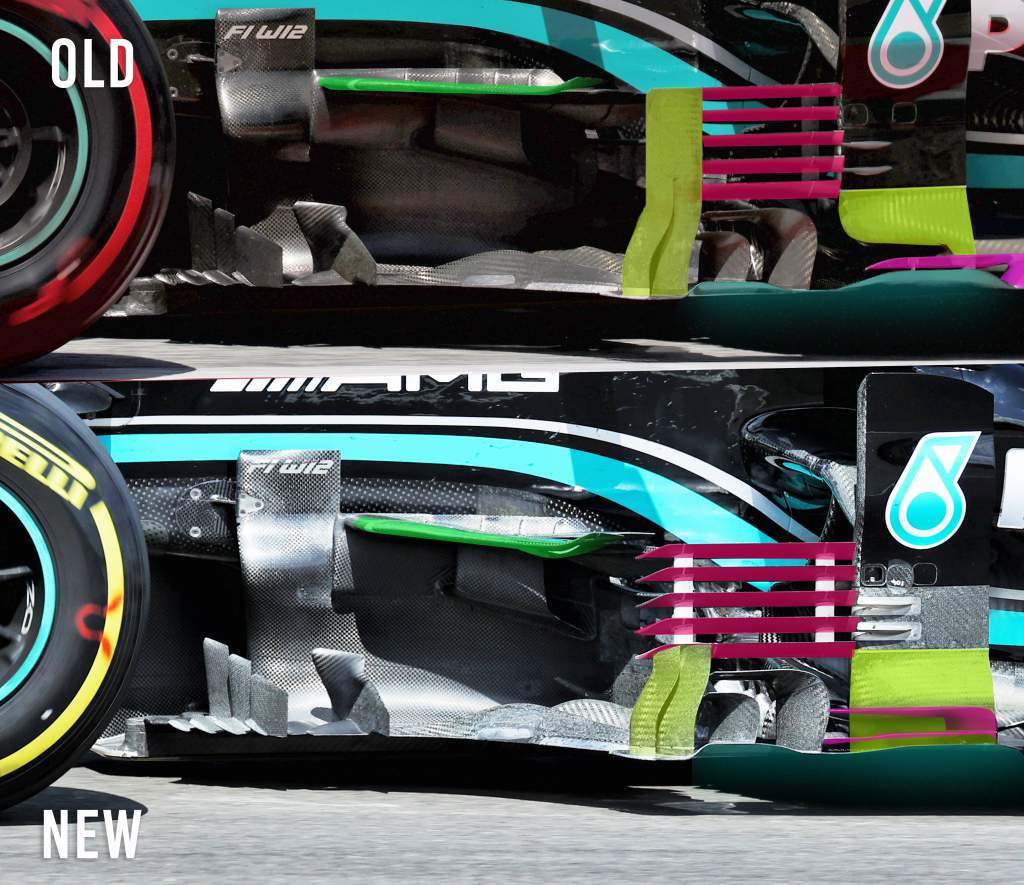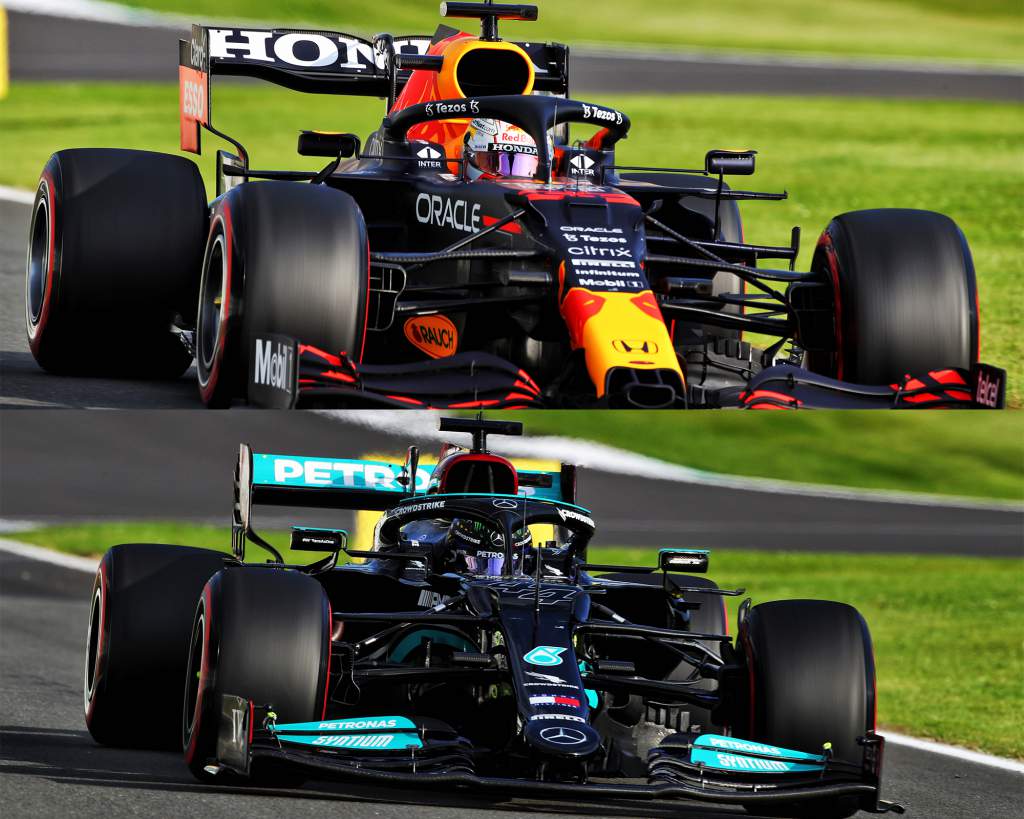Up Next

Since Mercedes introduced its upgrade for the British Grand Prix at Silverstone, it’s interesting to see that the problems it has blamed for the struggle so far this season appear to have diminished dramatically.
Though Max Verstappen and Red Bull still won the Sprint race by getting the jump off the line, Lewis Hamilton had managed to put Mercedes on top in the normal qualifying session for the first time since Barcelona in early May.
From the start of the season, Mercedes has been very critical of the aerodynamic regulation changes for 2021.
These were the outside of the floor being narrower with no slots in that area, narrowing of rear brake ducts and shortening of the rear diffuser strakes.
Mercedes felt that these changes hurt the low-rake cars more than the high-rake cars, but the reality is that the teams that run a high-rake concept simply did a better job in finding new solutions to the given problems.
It also made references to Honda making performance gains when it introduced its second power unit despite the fact that it’s a homologated engine package, meaning any such changes would not be within the regulations. Again, this was because of Mercedes’ relative lack of straight-line speed.
The Silverstone upgrade consisted of developments around the bargeboards and front corner of the underfloor to make this area work more efficiently.

This improved the overall performance of the underfloor because making this front corner of the floor work better means that the extra leakage under the sides of the floor in front of the rear tyres is not such a problem for the overall underfloor performance.
But the reality is that those developments meant Mercedes opened up another area where its improved performance really came from, which was the chance to run a less aggressive rear wing.
Any improvement in downforce from the bargeboards or underfloor will be at a ratio of something like 10:1 downforce to drag, whereas the reduction in downforce from the rear wing will be at a ratio of something like 3:1 downforce to drag.
So just to use round numbers, if you were lucky enough to find 30kg of downforce from the underfloor, that would be an increase of 3kg of drag.
If you were to reduce the rear wing level to end up with the same downforce, so a 30kg downforce reduction, that would be equivalent to a drag reduction of 10kg or a net reduction of 7kg of drag, which is about a 3km/h speed increase on the straights.
There is the old caveat to add in here and that is that with the rear wing producing less downforce and drag, the dreaded DRS will not be quite as effective as it was before. This means overtaking might just be that little bit more difficult.

If we compare the rear wings of the Red Bull and the Mercedes, the Red Bull version is a little more adventurous in that it has more of a camber reduction on the outer 25% of the wing span.
This is the area that is less efficient than the middle section, so Mercedes still has some way to go before it ends up at the same level of rear wing downforce that Red Bull seems to be able to run successfully.






